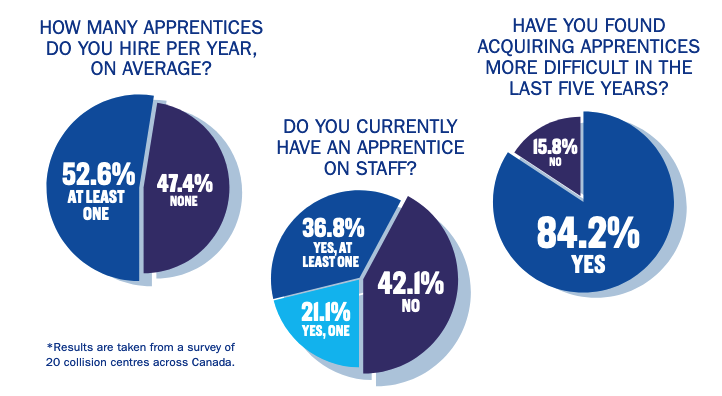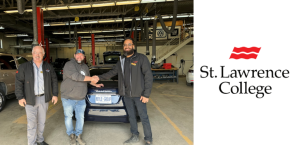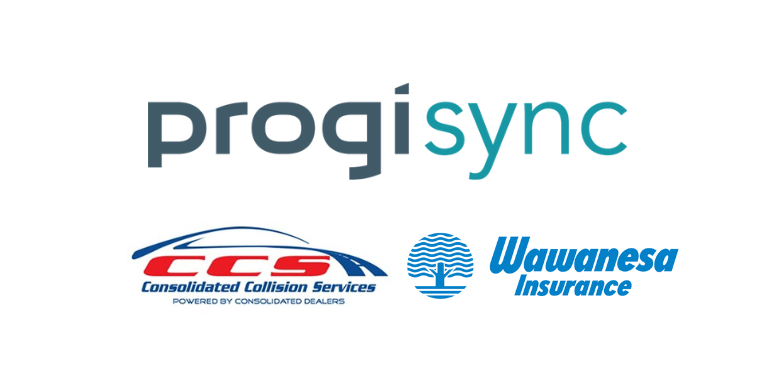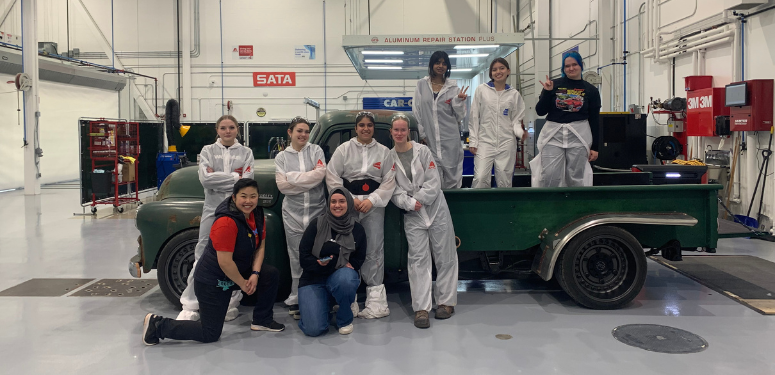Collision repair admins on apprenticeship
Hiring isn’t as easy as it used to be.There are many factors that play into Canada’s skilled trades shortage, especially when it comes to automotive. Many blame guidance counsellors pushing university careers over college ones, or outdated perspectives labelling collision centres as grimy, undesirable workplaces. Others point fingers at colleges for teaching outdated methods, setting students up for doom when they put their skills to the test in the real world.
As one reader simply put it: “The trade don’t pay inuff, so they choose oder trade.” [sic] Collision Repair mag asked collision centre owners, managers and hiring teams about their apprenticeship levels in recent years. When asked how simple it’s been to snag top talent from the market, nearly 85 percent of respondents said they found it more difficult to find and acquire skilled staff in the last five years.
While most of the collision centres surveyed did have an apprentice on staff (57.9 percent), 42.1 percent did not. Simply put, the staff needed to replace an aging workforce is not there.
There is a myriad of reasons why the industry is in this position. At this point, finger-pointing is futile. As another reader put it: “For years, the autobody trade has spoken about the coming problem, only for it to fall on deaf ears.” It’s time someone listened.
“For years, the autobody trade has spoken about the coming problem, only for it to fall on deaf ears.” — Anonymous Collision Repair reader

“When we hire, we look for positive attitudes and willingness to learn—the rest we can train. We make sure to offer our apprentices a career path. Currently, we have four apprentices: two of whom are female and one who will have his Red Seal this year.”
“The loss of vocational schools in Atlantic Canada has left the trades in desperation when it comes to attracting new talent. Here, in Nova Scotia, we are left with one campus in the Halifax/Dartmouth area, leaving all rural areas without. Further, the campuses have tight connections with two local, large dealership groups. When a student is noticed displaying exceptional skill and worth ethic, their name is given to those businesses. The arrangement essentially erases the possibility of any new talent entering or returning to rural communities for employment.”
“I see apprentices starting the trade and leaving after a couple of years, even months because of the ‘dirty work’ and low pay at entry-level. It is a tough trade, considering all the knowledge needed nowadays, and door rates are so low many facilities cannot afford to have a journeyperson teach an apprentice.”
“Autobody apprentices seem to not exist from Canada. When an advertisement is put out, we only receive responses from other countries—people that are looking to be sponsored into Canada. Public schools do not promote trades and the industry has spoken of the coming problem for years, only for it to fall on deaf ears. The challenge facing the autobody industry is not ADAS, it’s not electric vehicles—it’s the ability to find people to learn how to repair them.”
“Our past five apprentices have quit and moved onto other jobs before they completed training. In our 15 years of business, only one apprentice has become licensed.”
“The autobody industry door rates are too low to attract people into the trade. My door rate is $80.00 per hour, but insurance only pays between $52 to $62. Material rates are too low, sometimes non-existent when you consider the cost of the repair, not to mention material costs have been skyrocketing. For reference, I am located in an industrial park with a mechanical garage where the door rates are $105 to $150 per hour.”




































